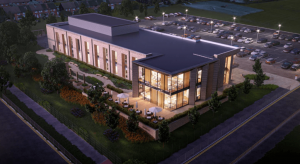For the past eleven months we have relied on the care and services provided by the NHS more than ever before. The Covid-19 pandemic has pushed our UK hospitals and medical teams close to breaking point. It has exposed the essential repairs and maintenance work that are desperately needed to restore and level up buildings, equipment, and facilities to statutory safety standards. As part of a £1.5 billion capital funding programme announced by the Prime Minister in the summer to help the NHS build back better, a £600 million investment has been allocated to 178 NHS Trusts to help clear the critical maintenance backlog.
In 2019/20, the total cost of tackling the backlog of maintenance issues in NHS trusts rose rapidly to an estimated £9 billion; a staggering 38% increase compared to 2018/19 where the cost and severity of backlog maintenance issues with NHS buildings and equipment was estimated to cost £6.5 billion. According to data published by the NHS Estates Returns Information Collection (ERIC), £1.5 billion is to tackle issues that present a high or significant risk to patients and staff. With the estimated cost of clearing the backlog exceeding the investment allocated, what has been given prioritisation?
In this blog, Key Account Manager Phil Osborne, with commentary from contracting partner Stepnell, will explore how this funding programme will be spent, it’s positive impact on patient care and the future of our NHS.
Deteriorating Hospital Buildings & Equipment in Disrepair
From crumbling and leaking, old and dilapidated Victorian hospital buildings, to antiquated and unreliable equipment, there is an urgent requirement to ensure facilities are fit for purpose. Ageing and inefficient heating systems and medical equipment not only incur higher running costs, but also put patient care at risk. Almost 1,800 projects are currently underway to address the most serious maintenance issues across the NHS estate before the end of March this year. The key target areas for improvement are:
• building new or refurbished buildings to deliver key services
• upgrades to electrical infrastructure
• improvements to ventilation systems
• works to improve fire safety
• replacing hospital lifts
Adrian Barnes, Regional Director, Stepnell Commented: “We’re really excited to be supporting our NHS Hospitals in upgrading and improving their facilities. At Stepnell we’ve had a long history of working in the healthcare sector and were first at Northampton General back in 1980. The new funding release for the NHS trusts is fantastic news for the future of the NHS. The Procure Partnerships Framework is an ideal vehicle to procure these urgent works providing the flexibility for Clients to react quickly and get schemes off the ground”.
Priority Projects
The Department of Health and Social Care (DHSC) has said the investment will see NHS patients, staff, and visitors across all regions in England benefit from refurbished hospital wards, brand-new electrics and upgraded ventilation systems. The Government’s commitment to modernise and invest in NHS infrastructure, alongside their manifesto to deliver 40 new hospitals and 20 major hospital upgrades across the country, has seen the following projects peak the priority list:
• £3.3 million to Croydon Health Services NHS Trust for a new paediatric integration unit
• £6.5 million for the construction of a new MRI building at St George’s Hospital in London to house a new scanner
• £2.7 million to refurbish Firth Theatres at the Northern General Hospital, which includes critical care, cardiovascular surgery and other surgical wards
Positive Improvements for Patient Care
The investment will have a profoundly positive effect on patient care and outcomes. State of the art equipment will ensure accurate test and scan results delivered quickly and cost-effectively, so patients are provided with the information they need without having to be referred to hospitals with more modern equipment. This reduces patient travel and wait time, allowing them to access on-going care more promptly. Medical teams will have more time for patient care and services with improved facilities.
The £600 million maintenance investment is additional funding on top of the £450 million investment already ring-fenced by the Government to improve hospital A&E departments over the winter period. In preparation for the spike in Covid-19 infections, NHS capital budgets were drained to expeditiously reconfigure hospitals to accommodate anything from larger waiting areas, more treatment cubicles, to more places where critical care and oxygen could be delivered. This helped to maximise A&E capacity by providing more space, reducing overcrowding, and upgrading infection control procedures. Seven “pop-up” Nightingale hospitals were set up to offer urgent care for coronavirus sufferers with the first being created within East London’s ExCeL exhibition centre. Impressively it took only 9 days to equip and fit 500 intensive care beds, with the support of 160 contractors, establishing a provision for 4,000 patients. Testament to what can be achieved when the Government, health professionals and a robust Health Systems Support Framework work successfully and collaboratively together.
Funding an NHS for the Future
The Government is committed to continuous investment in our National Health Service to ensure we have an NHS that offers a world-class provision. A programme of major NHS infrastructure works has been confirmed, including £850 million to upgrade 20 hospitals and £3.7 billion to help deliver 40 new hospitals by 2030. It is expected that £1.2 billion will be spent on NHS new hospitals and upgrades in 2021/22, with £4.2 billion for NHS operational capital funding.
From April 2021, The Treasury has apportioned an extra £235 million for further hospital maintenance works. In addition to the construction of new hospital facilities and the repairs of existing buildings, this will create opportunities for NHS suppliers to support with the development of key focus areas, such as technology and digital projects, AI laboratories, remote GP appointments, diagnostic equipment, and a dedicated science hub.
Robbie Blackhurst, Procure Partnerships Framework Director, Commented: “It is vital that as technologies advance that support best in class clinical care, it is important that the built environment can match the clinical function. The new priority project lists will ensure that hospital wards electrics and ventilation systems are fit for purpose. Safeguarding public sector spend and ensuring value for money is optimised across these projects is key and something that we a Procure Partnerships are looking forward to supporting with.”
Click Here To Download a Procure Partnerships Framework User Guide



